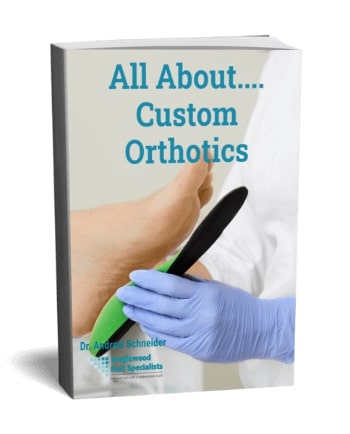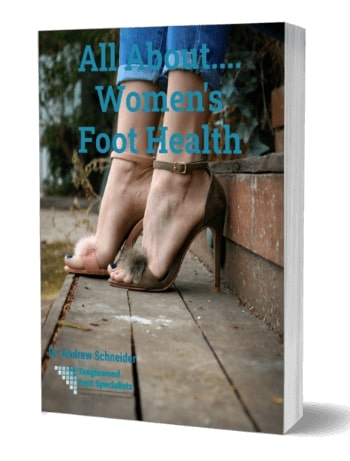When it comes to your foot pain, your arch height matters. Both high arches and flat can cause problems. Now, I've had amazing success treating patients with the flattest feet I've ever seen. But every time I see a patient like that, it gets me thinking. Some patients come in to see me for help once they notice foot pain. But I'm sure there are plenty of people out there who don't even realize their feet are flat. Which means they could be staring down the barrel of years of foot pain. That could be avoidable if they came for early intervention.
But how could you not know your arch type, you may ask? The answer is actually pretty simple. No two people are built the same way. So no one has an identical arch shape.
And why is that such an issue? Because, in spite of this reality, many people continue to buy identical shoes. As a result, too many of us buy the wrong shoes for our feet. So we don't receive the support we nee, and we experience discomfort.
Of course, you want your your arches fit in your shoes and feel supported. Now, to get that support, you may need a custom orthotics fitting. But before you get to that point, it's a good idea to determine which type of arch you're working with. This is what you need to do to figure out your arch height.
How to Determine the Height of Your Foot Arch
Here's a five-step plan to figure out your individual arch height. I hope you try it out. Because knowing your arch height can make you an informed shoe shopper. And it may help you avoid future foot pain. Let's get started:
- Get a sheet of paper and put it on the floor.
- Wet your foot. (If you want a foot bonus here, add some epsom salts to the water and soak for a few minutes. Once you finish your arch-height mission, you can complete my guide to a DIY pedicure!)
- Sit down on a chair and place your foot on the paper.
- Repeat process with second foot
- Take a look at your footprint. The shape will reveal your arch type. If there's almost no indentation on the left edge, you've got a flat foot. Almost no footprint in the mid foot? That's a sign you've got high arches. Any middling print? That means your arches are neutral! (P.S. if you want to try this project with your kids, check out this arch height alligator foot print craft.)
Once you know what type of arch you’re dealing with, choosing the right shoes becomes much simpler. So now I'll walk through buying shoes based on your foot arch height.
Problems Caused by High Arches
If you have high arches, there will be much more space between the floor and your arch. This can lead to several foot problems, including:
• Metatarsalgia, or painful inflammation in the ball of your foot. It’s usually worst when you stand or walk for a long time.
• Plantar fasciitis, or inflammation in the plantar fascia ligament that runs from your heel to your toes, along the bottom of your foot. With this condition, you’ll experience stabbing heel pain that’s usally worst when you get out of bed, but improves as you move throughout your day.
• Hammertoes, or a deformity in your second, third or fourth toe that causes a bend in the joint.
• Unstable ankles, increasing your risk for sprains
• Stress fractures of the metatarsal bones, cause by the added pressure on the forefoot.
Problems Caused by Low Arches (Flat Feet)
With flat feet, you low or non-existent arch can also cause problems. These include:
- Foot pain
- Heel pain
- Troubles finding shoes that fit
- Arthritis later in life
The Right Shoes to Buy for High Arches and Low Arches
Now you know your arch height, and the trouble your biomechanics may cause you, it's time to know what to look for at the shoe store to help protect your feet.
If you have high arches. Choose shoes that have lots of extra cushioning. Styles like the Nike Air Max or Vapormax sneakers are great choices. But stay away from hard-or-thin-soled footwear. That means you may steer clear of Allbirds flats, no matter how cute they are.
If you have low arches (flat feet). Look for well-supported, firm shoes with lower heels. In this case, you don't want a platform shoe. Instead, a great slide like a Birkenstock could work well. Since your body wants to rotate forward to the balls of your feet, high heels will be extra difficult. So do yourself a favor and say not to Louboutin stilettoes.
Neutral arches: you have a carte blanche when it comes to selecting shoes. Now, that doesn't mean you should go crazy. But it does mean you have more flexibility. And, as long as you make smart choices, you'll be ok. So choose a comfortable, supportive pair of shoes. (It should feel good the first time you put it on.) That way, you can wear the shoes for long periods of time or for walking and exercising. And you should be able to avoid arch pain.
Did you buy the right shoes for your arch height, but you're still having arch pain? Keep reading as we try to get to the root of your problem. So we can get you the pain relief you're seeking.
What's Causing My Arch Pain?
Of course, arch pain could be a sign of another problem—plantar fasciitis. This is an injury that resultf from torn or inflamed plantar fasciia bands. (These are connective tissue on the bottom of your foot.) With plantar fasciitis, you'll notice crippling heel pain. But you can also feel pain in the arch of your foot.

If this is the cause of your arch pain, you might notice pain that comes and goes. But in the following days, weeks or months, the pain will be more consistant. And much worse. Plus, the pain may not stay put. In fact, plantar fasciitis can move from one foot to the next, if you don't seek early treatment.
Why am I telling you all this? The answer is simple, really: it can all be connected back to your arch height (at least, it sort of can...) This is what I mean. The most common cause of heel pain (or Achilles tendinitis) is faulty foot mechanics. In other words, people with flat feet or high-arched feet have a higher risk for heel pain. So, if you're having this kind of heel pain, I urge you to go back to our guide to detrmining your arch height.) And, keep in mind that wearing the wrong shoes can contribute to plantar fasciitis. Especially if you make poor choices, like wearing un-supportive flip-flops.
But wait, I'm still not done! Pain in your arches could be a sign of a bruise, sprain or fracture. Which is why, unless you see your doctor, it may be very difficult to figure out why your feet are hurting you. And that's where I want you to check in with you podiatrist.
Because, if your arch pain is a problem, and our shoe guide isn’t helping? It's a good idea to get scheduled for a visit, right away! That's the key to getting you walking comfortably again!






















